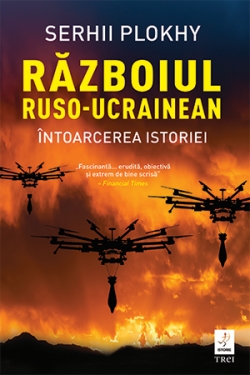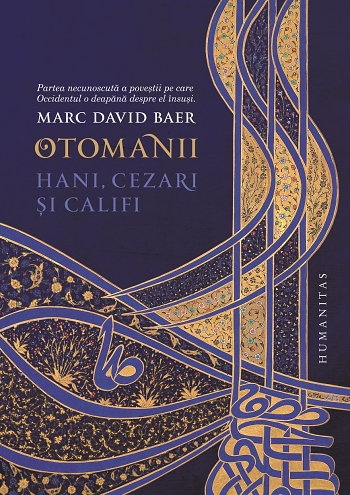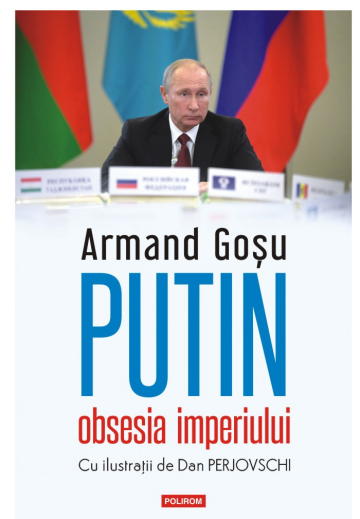No one can escape the lie manufacturing machinery in the Kremlin: Obama’s decisions are falsified by the Russian press, and Kerry’s speeches, when they are not mangled, are completely made up. The British Parliament is misquoted. Sometimes the lies have a measure of restraint, but most times they are exaggerations, broad strokes, from television channels to press agencies, which concoct news that don’t exist. Therefore, it is extremely difficult, if not impossible, to effectively combat so many lies at the same time. This Brief analyzes Russia’s embrace of psychological warfare and its role in modern hybrid/non-linear wars. It looks at the influence of Evgenyi Messner’s writings on Russian military thinking today and discusses another key dimension: governance. A weak and fragile state, with legitimacy gaps, a dysfunctional and corrupted administration, provides an ideal target for psychological warfare and a strategic window of opportunity to insurgents.
Psychological warfare, an essential component of contemporary warfare, is conducted through propaganda, manipulation, falsifying information and outright lying. What the Russian media has been doing over the last few years, especially since Viktor Yanukovich fled Kiev in February 2014, is called psychological warfare. It has two components: one for domestic use (for the public in Russia and in other former Soviet republics, where the population watches Russian television channels), and another for foreign use (for western states, in which case it uses more sophisticated instruments).
The characteristics of Russian propaganda are: generating very strong emotions, aggression, and a dramatic departure from reality. Russian television stations, with very few exceptions, create a more and more complicated and unpredictable reality, ‘generate fears, bringing people to the brink of chaos and panic’. Once created, the huge stress damages the mechanism of rational thinking, people are herded into a crowd, where archaic instincts take over, triggered by the simplest of emotions’.[1]
In Russia, whoever is not with the Kremlin, whoever criticizes Putin, or even doubts the righteousness of his policies, is considered a traitor and an enemy. Against the very few who dare express minimal reservations towards official policy, a movement formed recently, with the blessing of power, the Anti-Maidan movement, with the express objective to combat any position, to wipe out the smallest trace of doubt towards Putin’s wisdom. Anti-Maidan fights against the ‘5th column’, the enemy within.[2]
At the same time, during the last year, the Kremlin controlled propaganda machine has paid also much attention to the “external enemy”. Here, the main enemy is the United States, who wants to lead the world alone, to impose its will abusively on other countries, in spite of the fact that nothing gives them the right to do so, since the Cold War ended in a tie, through the willing breakdown of the Soviet Union. Obama doesn’t want to discuss with Putin, does not respect Russia’s interests, which it treats with contempt, as if it were a second hand power. In the end, there is a particular tangible narrative that dominates the Russian mass media space whose meaning is to shape and induce in the public mind a certain interpretation of the post Cold War world: “Russia has developed within the last 15 years a particular narrative, an anecdotal foundation of its politics which is based on complete subjective, biased interpretation of post-war developments in Europe and elsewhere in the world. It is kind of a revanchist interpretation of the meaning of 1991 moment – the collapse of the Soviet Union – as the “illegitimate victory” of the West. After 2007 with Putin’s speech in Munich where he canonized this interpretation – he kind of signed for this perspective that Russia has been humiliated on purpose – this narrative becomes mainstream. Now, it completely dominates the national mass media. Everything that the West does is interpreted in this frame to prove the point.”[3]
However, at this stage, Washington does not act openly against Moscow’s interests, but through Kiev, where it has grabbed power by means of a Maidan staged by the CIA, and politicians who want to hand over Ukraine to the West in general, and to the U.S. in particular. However, in a not so distant past, official Russian propaganda was saying that Ukraine is a sister country, the Ukrainian people a sibling people, and that Russians and Ukrainians share not only the oldest history (both claim descent from the Kievan Rus), but also an ethnic (Eastern Slavic) and linguistic (Slavic) group, as well as the Christian Orthodox religion, the traditions of Byzantium, the values of Euro-Asiatic civilization; as such they would be unable to conceive of a separate future. That was up until a decade ago, until the Orange Revolution, when for the first time the Russians understood that their Ukrainian brothers can have their own perspective, other than that of the Kremlin, on their own political evolution.[4]
The domestic crisis in late 2013, which took an unexpected turn with Viktor Yanukovich stepping down and fleeing the country, provided Russia with the pretext of occupying and annexing Crimea. For Moscow television stations, all of a sudden the Maidan protesters turned Fascist, the descendants of nationalist leader Bandera, right wing extremists, authors of a CIA orchestrated coup, terrorists, anti-Semites, etc. As the fighting spread to Donbass, Kremlin propaganda turned more and more aggressive. Reporters showed maimed children, raped girls, humiliated old people, dozens of bloody corpses, burning homes. Overwhelming footage that sparks strong feelings. However, the images that accompanied the reports proved to be from other wars. Or simply picked off the Internet. The bloodied boy shown on television and presented in Komsomolskaya Pravda is not from Slaviansk, but the Syrian hospital Alhurria. Syria also provided the 3 year-old shown on Pervyi Kanal in July 2014. A crucified 3 year-old boy, what could trigger stronger emotions?! State news agency Ria Novosti, in a material on the humanitarian crisis in Ukraine, talks about hundreds of bodies, their organs hanging out, found in a field. However, the photo accompanying the material is from Chechnya. Granted, those were atrocities, but ones perpetrated by the Russian army against Chechen civilians. Another Moscow television station reported on a supposed prisoner camp in Ukraine using a photo from Bosnia, 1995.
A large scale report was presented in May 2014 on the main public television channel about 140,000 Ukrainians who take refuge in Russia for fear of the Fascist government in Kiev. Its continuation the next evening was even more dramatic, the reporter spoke of 600,000 people fleeing the country. They broadcast footage of hundreds of cars and thousands of people in a hurry to leave the country through the Shegini border crossing. The only trouble is that Shegini is in the Lviv region, on the Polish border, so they were crossing into Poland. It was also Pervyi Kanal, the channel with the widest audience, which broadcast a report on a secret base in Lithuania where Ukrainian fighters supposedly train. The secret base was the Aerodream vacation house, where you can book rooms on-line. The reports on the military theater were illustrated with images from the film Brestkaia kreposti (May-June 2014), the wars in Iraq and Syria, strong images with bombs exploding and houses collapsing in clouds of dust. After these blatant fakes were exposed, Russian television stations started being a bit more careful with using easily identifiable images taken from the Internet.
These examples of Russian psychological war are manifold. The propaganda machine cloned the website of the newspaper Ukrainskaya Pravda (pravda.com.ua), where it posted news which then they quoted as being published in Kiev (the clone’s address was prawda.biz.ua). For weeks on end, the Ukrainian Defense Ministry said ‘The information has no relation to reality and is a provocation’. Several websites in Ukraine or the West have revealed these fabrications. Many have given up in the meantime. It is impossible to effectively combat so many lies. In addition, they are targeted at an audience made up primarily of viewers of Russian television, which often cannot be reached for this propaganda to be dismantled. In the absence of alternative independent mass-media channels, the war for the minds of the people that the Kremlin is waging has become similar to the old experiment by Felix Sobolev, Russian-Ukrainian psychologist and documentary maker (1971, «Me and Others»): “he took a group of adolescents and created a kind of a closed telephone network so he can listen to their conversations with a second line. And he was feeding this network with unfinished impressions of reality. He started to leak some wrong information and look at how they developed it. He discovered that every story that can be used to reinforce this network to make it closer, to feel the common danger, to create a community, it makes the communication faster, longer, more extensive. Things that divide them are being discarded. The emphasis is on what unites them. This narrative is installed in the verbal version of the policy, not in the actual policy, in the deeds of policy. Its emphasis is always on denial, negation, on the destructive part, on what is wrong.” [5]
A different type of warfare
The extreme manipulation, the broad strokes, its unprecedented aggression, surpassing even limits drawn in the Cold War, is part of the new type of war designed in Moscow, and applied successfully in Ukraine. The Head of the General Staff Army General Valeryi Gerasimov, recently wrote that such clashes on the informational field of battle have become essential components of modern warfare: “the very rules of war have changed. The role of nonmilitary means of achieving political and strategic goals has grown, and, in many cases, they have exceeded the power of force of weapons in their effectiveness.”[6]
After the war with Georgia (August 2008), believed to be the last classical war, Russian military theoreticians have initiated a debate in army publications on the future of warfare, which – they say – is going to be insurrection. Especially, the insurrections incited in foreign lands. It is in this context that the so-called Gerasimov doctrine tends to be inspired by the lessons provided by the Arab Spring: ”it would be easiest of all to say that the events of the Arab Spring are not war and so there are no lessons for us — military men — to learn. But maybe the opposite is true — that precisely these events are typical of warfare in the 21st century.”[7]
One of the most important components of this is psychological warfare. The body of work written by anti-Bolshevik colonel Evgenyi Messner (1891-1974) are the basic theoretical source which inspired the Russian General Staff officers. Messner fought on the Romanian front with the 15th Infantry Division in WWI, he took refuge in Odessa, beyond Donbass, joining the White Russian troops who fought the Bolsheviks in the Civil War, then took refuge in Belgrade, where he taught at the Higher War School until 1944. Messner had the experience of the peasant war led by Nestor Makhno, of the clashes in South East Ukraine, such as Zaporozhe, Mariupol, etc. (1918-1920), fought by Denikin, Makhno, Trotsky, the Cossacks. This complex military experience, on top of which came the collaboration with the Wehrmacht in WWII, was the main source of information for designing the theory of the new type of war, miatezhevoina (insurrection war, rebellion, uprising). The theory is presented in four books published in Russian in Buenos Aires, and the most important of them are Miatezhe – imea Tret’ei Vserminoi (1960) and Miatezhevoina (1971). Messner’s books were discovered in Russia 40 years from the date of publishing. It was as late as 1999[8] when an article signed by Messner was published in the military supplement to the newspaper Nezavisimaya Gazeta. Starting in 2004, Messner’s books started being published in Moscow, becoming the main source of inspiration for Russian military theoreticians[9]. In addition to war on land, in the air and on water, the new war opens up a new, fourth space, that of people’s minds. ‘In wars so far, what was considered important was to take over territories. Henceforth, what will be [important – Ar. G. emphasis] is winning over the minds of those in the enemy state‘. The aim of psychological warfare, Messner goes on two say, is inducing panic in the enemy’s mind, mistrust of leaders, doubt in one’s own force, opinions, feelings, collapsing the morale of the troops and population. This in itself would be recognizable to the officers that were exposed to the counterinsurgent campaigns of the Cold War and were contemporary with Messner when he was refining his theory of warfare. For them, it was clear that rebellions and insurgencies were different from other forms of warfare precisely because “they are primarily concerned with the struggle for men’s minds.”[10] To some extent, this captured the Zeitgeist of the ‘60-‘70. Messner’s ideas were included in the textbooks used by young officers in Moscow’s military academies, in Russian and Soviet military history books, they are quoted in debates on the future of warfare, and have even been further developed by other Russian theoreticians, like Igor Panarin[11] and Gerasimov. These details confirm the fact that Moscow acts as if it were at war with the West. Only in appearance does the front line stay in Donbass; according to the theoreticians of this latest wave in Moscow military academies, inspired by Messner, there is no front line, war extends to the entirety of the enemy territory, because it targets the minds of the people in that state, and not their territory.
A year after it was started, with its new Russian strategy of hybrid warfare, as dubbed by Andrey Porubizh, defense and security adviser to the president of Ukraine, asymmetric war, or insurrection war, as it is classified in Western expert analysis, miatezhevoina (translated into English as mutiny, rebellion), as confined to history by White Russian colonel Messner in Argentina in 1947, enjoys complete success. However, what worked fine in Ukraine may fail against the Baltics, for instance, or other countries.
Some broad contours of “hybrid defense”[12]
There are a few elements that suggest an emerging consensus when trying to highlight potential key dimensions that the West should have in mind in order to develop a strategy against the hybrid warfare. Most of them can be considered as being part of the continuities of warfare in 21st century.
First of all, it is the governance dimension. In this context, non-linear warfare builds on some of the pivotal trends that defined the post 9/11 security environment in the sense that the ideal incubator for this type of violence is the weak and fragile state, the state that has a dysfunctional and corrupted administration, a state whose legitimacy gaps provides to the insurgent entrepreneur a strategic window of opportunity to be seized. Historically, these are the conditions that are most associated with the likelihood of an insurgency or rebellion- “governance and state capacity is the most convincing explanation for insurgency onset: insurgencies are likely to develop in rugged, difficult-to-govern countries when governments’ capacity to tamp down or co-opt opposition groups is in decline.”[13] From this perspective, Ukraine provided almost perfect lab conditions: a hollow state, a highly corrupted administrative machinery, deep cleavages between the center and the disenfranchised Eastern periphery. As Professor Mark Galeotti has emphasized “the tragedy of Ukraine has been the tragedy of its history since 1991. This is not so much a failed state as a state that never succeeded in the first place. (…) Ukraine has demonstrated that is possible to run your country worse than Russia: extraordinary levels of corruption, the worst kind of predatory corruption, but also a failure to cohere socially and politically. Ukraine is physically large, but in governance and resilience terms looked incredibly weak.”[14] In short, a fertile ground of societal “prerequisites for a hybrid war”[15] that with the right shaping strategy “capitalizing on the inherent weaknesses of the target country”[16], it could provide Moscow the upper hand. It is in this context that hybrid defense should be first and foremost “about legitimate and effective governance. On so many levels this is precisely a war of governance.”[17]
There is also a second dimension associated with some of the key traits of post 9/11 stabilization campaigns, that of comprehensiveness. As the Gerasimov doctrine calls for the fundamental blending and integration of the non-military means with the more traditional kinetic tools, hybrid defense requires a whole-of-government approach. “The most important thing that we should learn from the Russians is the coordination between military and non-military actors. There is no clear delimitation anymore,” told us Andras Racz after studying in detail the Russian pattern of the new generation warfare. This would be a familiar snapshot for the practitioners of the low-intensity warfare of the past century who understood the need of putting together comprehensive civil-military campaigns where the military effort was not the only game in town: “insurgency can only be successfully countered by a government program in which the activities of the country’s security forces are closely tied into an overall campaign consisting of political, economic and psychological measures. For this to happen, security-force commanders from the top to the bottom must work closely together with national and local politicians and officials to implement the program.”[18] What matters increasingly is the ability to mobilize across the spectrum, to synchronize across all dimensions of power. As General David Petraeus used to say, “it is all in”.
Finally, hybrid defense requires a population-centric campaign. It is about influencing the hearts and minds of the target audience, about understanding their core grievances, fears and frustrations, about managing any potential insurgent energy. Ultimately, an important component in hybrid defense should aim to influence behaviors: “we need to start understanding behavior far more. For me, it’s not opinions, it’s not perceptions, it’s not attitudes – it’s behaviors. Period.”[19]
by Armand Gosu and Octavian Manea, September 11, 2015
This article was developed in the context of the Romania Energy Center project “Black Sea in Access Denial Age”, a project co-financed by the North Atlantic Treaty Organization (NATO). To read more, go to http://www.roec.biz/bsad/
REFERENCES:
[1] Psikhologiya manipuleatora – eto psikhologiya ubiytsy, 25.12.2014, interview with Prof. Elena Sokolova, novayagazeta.livejournal.com
[2] Peter Pomerantsev, Nothing is true and everything is possible. The surreal heart of the New Russia, New York, 2014.
[3] Interview with the Russian Media analyst Vasily Gatov, “Deconstructing the Russian Infowar and Mindset”, Defence Matters, September 2015, http://defencematters.org/index.php?page=article&art_id=56
[4] Ukraine and Russia: People, Politics, Propaganda and Perspective, edited by Agnieszka Pikulicka-Wilczewska, Richard Sakwa, Publishied by E-International Relations, 2015.
[5] See reference 3, Vasily Gatov, September 2015.
[6] Mark Galeotti, “The Gerasimov Doctrine and Russian Non-linear War”, July, 2014, https://inmoscowsshadows.wordpress.com/2014/07/06/the-gerasimov-doctrine-and-russian-non-linear-war/
[7] Idem. See also Валерий Герасимов, „Ценность науки в предвидении. Новые вызовы требют переослмысления форм и способов ведения боевых дейстий“, Военно-промышленный курьер, но. 408 (476), 27 февраля – 5 марта 2013.
[8] E. Месснер, Мятежевойна, http://nvo.ng.ru/history/1999-11-05/7_rebelwar.html (accessed January 3, 2015).
[9] Хочешь мира, победи мятежевойну, творческое наследие Е.Э. Месснера, Военный Универститет, Русский путь, Москва, 2005.
[10] Frank Kitson, Bunch of Five, Faber and Faber, London, 2010, p. 282.
[11] Игорь Панарин, „Система информационного противоборства. Механисм внешнеполитической пропаганды требует восстановления“ (www.vpk-news.ru/articles/3677)
[12] The term was introduced by Mark Galeotti in “Time to think about hybrid defense”, War on the Rocks, http://warontherocks.com/2015/07/time-to-think-about-hybrid-defense/ , July 2015.
[13] Seth G. Jones & Patrick B. Johnston, “The Future of Insurgency”, Studies in Conflict & Terrorism, 36:1, 2013, page 4.
[14] Interview with Mark Galeotti, “Hybrid War as a War on Governance”, ROEC, August, 2015, http://www.roec.biz/bsad/portfolio-item/hybrid-war-as-a-war-on-governance-2/
[15] Andras Racz, “Russia’s Hybrid War in Ukraine. Breaking the Enemy’s Ability to Resist”, Finish Institute of International Affairs, June 2015, page 73.
[16] Ibidem, page 76.
[17] Interview with Mark Galeotti, “Hybrid War as a War on Governance”, ROEC, August, 2015, http://www.roec.biz/bsad/portfolio-item/hybrid-war-as-a-war-on-governance-2/
[18] Frank Kitson, Directing Operations, Faber and Faber, London,1989, p. 50.
[19] Interview with Cdr. (rtd) Steve Tatham, ”To Respond to ISIS and Hybrid Warfare We Need to Invest in POPINT”, Small Wars Journal, August 2015, http://smallwarsjournal.com/jrnl/art/to-respond-to-isis-and-hybrid-warfare-we-need-to-invest-in-popint






 Aikido cu mintea si corpul coordonate. Invatati cum sa va relaxati si cum sa va pastrati calmul in conditii de stress.
Aikido cu mintea si corpul coordonate. Invatati cum sa va relaxati si cum sa va pastrati calmul in conditii de stress. 
Excellent essay, confirming the ever active and very effective Russian secret war against all free nations in the world.
I think that a new form of this war was the ” emigration invasion : , managed for the first time against the USA and, now, against the EU.
For the first stage , the massive penetration through the south border of the USA border , the new ” genial ” idea was the use of the veritable cohorts of children, based on the very lax American laws regarding the family reunification . The allies in this war were the drugs cartels, drug lords and , I’m sure, the south- American governments ( interested to be freed of many thousands of people in its charge ) and finance barons ( who are frequently humiliated in the trading connections with USA ). In this case, the money was from South- American drugs , but the logistic was 100% Russian
Fir the second stage, the Islamic invasion against EU, the allies are Turkey ( a good revenge for the repeated refuses for its admission in EU ), Greece ( an opportune revenge for the recent kneeling in front of EU laws ) and all fundamentalist Islamic states ( a good revenge, too, for the Arab spring and for the dramatic cut of the oil price ). In this case, the money was Arab and the logistic wax 100% Russian
Am I right ?
…news that DOESN’T exist…English speakers know it!
manipularile mediatice ale regimului putin mi-aduc aminte de cele cu care a „lucrat” si televiziunea romana „libera” ani buni dupa revolutie.
pe de alta parte, suscitarea emotiilor si instrumentalizarea lor au fost constatnt folosite de regimurile totalitare pentru controlul maselor.
Fully agree with all this and I am waiting for the counterpart article, just as documented, hopefully. A rich subject would be „operation Gladio” and its „backfiring”.
It’s the age-old dance, Russia vs USA. Propaganda, misinformation, misdirection never ceased after the classic war was completed(ww2). The Berlin wall falling did not put an end to the „cold war”, if anything, it just preceded the more devious use of modern technology pertaining to dissemination(„The information is sent out and received, but no reply is given”).
As a paradox and conundrum for any society that declares itself „democratic”:
„In his speech President Kennedy addresses his discontent with the press’s news coverage before, during, and after the Bay of Pigs incident, suggesting that there is a need for „far greater public information” and „far greater official secrecy.”
http://www.jfklibrary.org/Asset-Viewer/Archives/JFKPOF-034-021.aspx
Strange enough, both Pentagon and the Obama administration have been crucified lately for similar lies. As a reader, one has to read about both sides, that’s clear. As a writer, one has to take into account who’s paying one’s grants, scholarships, etc.